Saleh Malas |Amal Rantisi |Hussam al-Mahmoud
“My father is from Hamoryah town in Damascus Countryside. The [Syrian regime security services] arrested him during one of their many raids into our home. They detained him during the fifth month into the revolution, on 23 November 2011. My mother and sister are still in the town, waiting for him.”
Withholding his last name for security concerns, young man Haytham recounted his story and the bitter experiences he and his family went through over the past 10 years since his father’s arrest.
His father was among the first activists to join the 2011 anti-regime protests in Damascus Countryside.
However, the father was not among the batches of detainees released from the regime’s detention facilities recently reported by pro-regime media. He remains behind bars.
These recent releases in Damascus Countryside have drawn the ire of detainees’ relatives, for the releases were carried out for several purposes, but definitely not the real purposes they were struggling to achieve.
In this extensive article, Enab Baladi talks with rights activists and political analysts, discussing the recent regime-led unconditioned detainee releases in Damascus Countryside, the messages these releases convey, and whether they have any additive value on the path of justice for Syrian political prisoners.
Victims of “terrorism” charges
Who would redress their grievances?
“His arrest was brutal. The [Security services] bit him so hard, breaking one of his ribs. He could not breathe!” Haytham told Enab Baladi, traumatized by the memory.
Seven months later, one released detainee told Haytham that his father was first held at the Air Force Intelligence Service branch and was then transferred with a batch of detainees to the Sednaya Military Prison before he was finally deposited at the Adra Central Prison.
The family managed to communicate with the father once. That was in late 2014. “My father called us. He said that the security services are transporting him to another prison, but he did not know where. Later, some people told us that he died at the State Security Service branch,” Haytham recounted.
Haytham’s mother referred to the Military Police Department in the Qaboun district in Damascus several times to inquire into her husband’s fate. Officers there gave her mismatching information. Some would tell her he died; others told her he was still alive.
Haytham’s family did not despair. They live in the hope of getting some piece of information about the beloved father’s destiny.
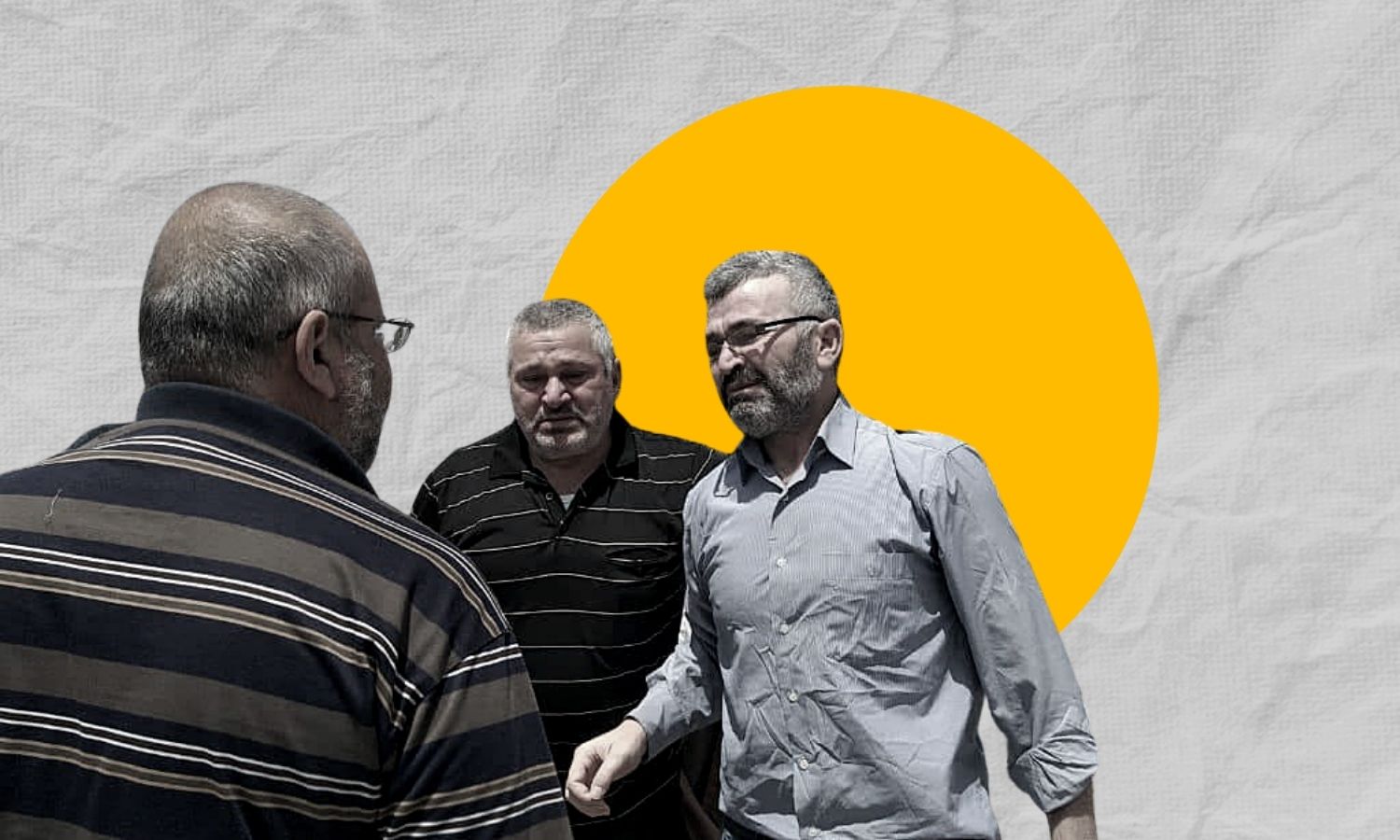
Men crying upon reuniting with a relative released from the regime’s detention facility in Duma — 3 July 2021 (Edited by Enab Baladi)
Enab Baladi reached out to the brother of a recently released detainee from Duma city, Damascus Countryside.
Living abroad and wishing that he remains anonymous for security concerns, he narrated that his brother was arrested in July 2018 on allegations of terrorism.
The brother was arrested with other 30 persons from the al-Duwair Accommodation Centre, established by the Syrian government to shelter people displaced from Eastern Ghouta.
Over the course of his detention, the brother and those arrested with him were relocated to various security branches across Damascus city. They were initially held at the Political Security Branch and then transferred to the al-Khatib, next to the Air Force Intelligence branch and then to the Sednaya Military Prison. They were finally kept in custody at Adra Central Prison.
The anonymous young man recounted that his brother was returned to the Military Security Service branch, from where he was released.
His health was extremely poor and he was prevented from leaving Duma city because the security services were subjecting him to a “thorough security check-up,” he added.
The anonymous young man confirmed that only a few detainees were resealed in these recent batches. The majority of those released are imprisoned for criminal charges.
He added that out of Duma’s 2500 forcibly disappeared detainees, only five were released.
To gain insights into the conditions of detainees at the regime’s detention facilities, Enab Baladi also interviewed former detainee Adnan Yassin.
Yassin was one of the people who sought refuge at the regime-established accommodation centers. He was displaced from Hamoryah town following the regime’s extensive airstrikes and siege in the region in 2018.
Yassin spent only two days at the center. Fighters affiliated with the 4th Division arrested him on 20 March 2018.
Yassin was among the first people to fall victims to the regime’s arrest drives at the accommodation centers that hosted men and women fleeing the shelling in the cities across Eastern Ghouta.
At the 4th Division’s headquarters, where he was detained for 30 days, Yassin was repeatedly tortured during the interrogation sessions.
He was subjected to electrocution and tormented with Bisat al-Rih (Flying Carpet)—a torture method practiced by regime security services against detainees.
Yassin also saw four detainees die under torture. He identified them as from Deir al-Asafir village in Damascus Countryside.
“Systematic torture was a daily practice. Every day, there were new detainees, new dead detainees. I turned into a wall there. I lost the ability to speak,” Yassin narrated.
He was transferred from the 4th Division’s headquarters to the Anti-Terror branch. There, too, he was severely tortured.
“A warrant officer from the al-Fu’ah town approached me. He started insulting me and then took me to the torture cell. He took the cover off my face. There stood a naked woman with beating marks across her body. He resumed torturing her, pledging that he will bring in all Ghouta’s women from the accommodation centers. He said he will make sure they end up just the same as this woman,” Yassin narrated.
A second former detainee from Eastern Ghouta told Enab Baladi that he was arrested in November 2011. His charges were filming protests and shouting slogans.
The former detainee refrained from mentioning his name for security concerns. Ignoring that he was a civilian, security services transferred him to the Military Field Court in al-Qaboun, next to the Sednaya Military Prison in 2013 and then to the Adra Central Prison.
He said that the indictment list laid against him included “inciting terrorism”. He was sentenced to seven years and a half and was released late 2015.
In 2014, while yet in the prison, a group offered him that he joins the ranks of the National Defence— a regime-affiliated paramilitary group— in exchange for his release from Adra prison.
In addition to incarceration, the young man was deprived of his movable and immovable assets. Regime authorities seized his properties under the Counter-Terrorism Law No. 19 of 2012.
In addition to denying them their property rights, the regime insisted on enlisting released detainees into the ranks of its forces. The released were referred to Security Committees that forced them into signing settlement agreements and then joining the regime’s reserve forces.
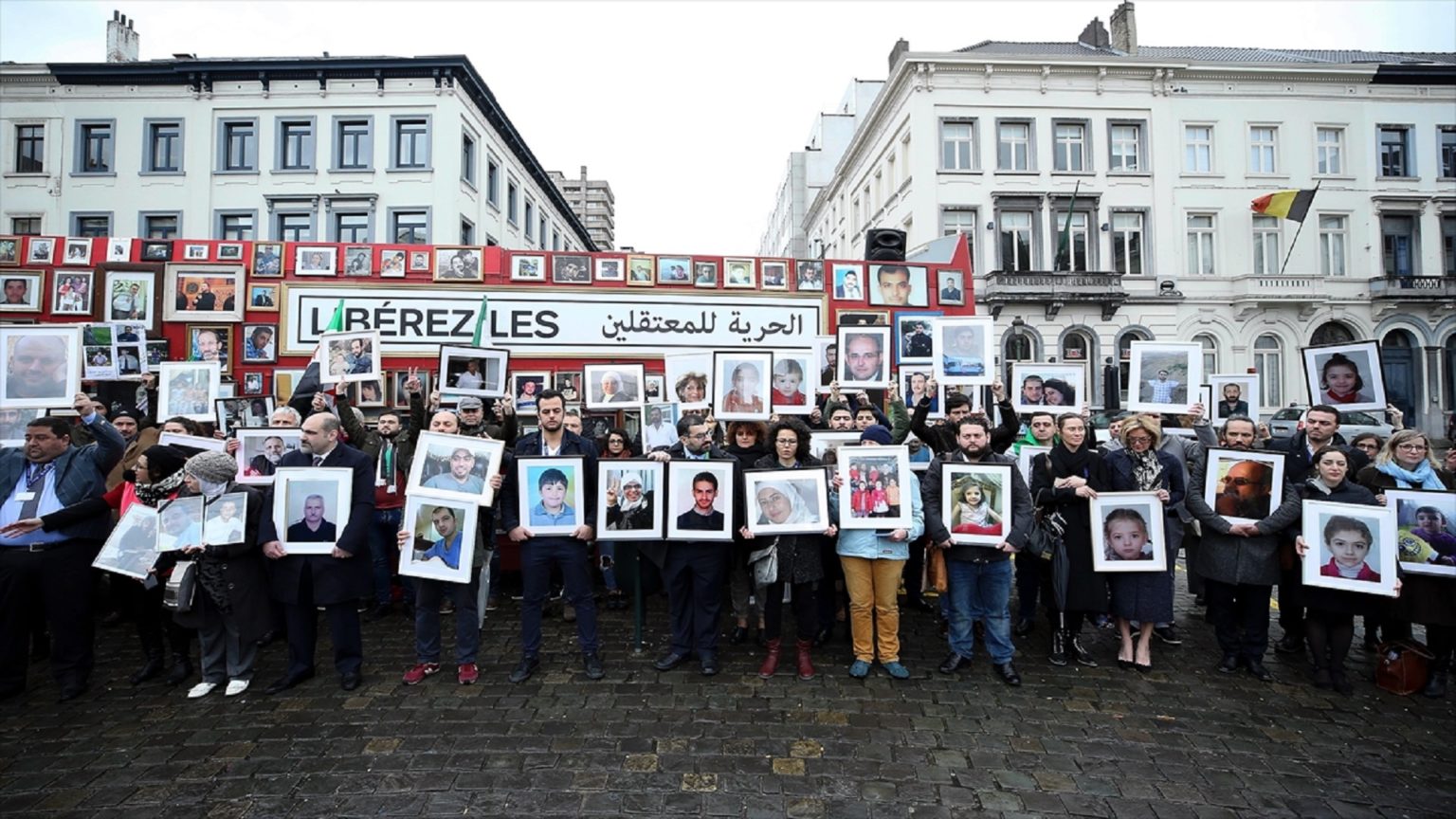
Dozens demonstrate in front of the European Parliament to demand the release of detainees in the prisons of the Syrian regime (Families for Freedom)
While arresting many, regime is releasing only a few
Detainees’ families outraged
The bus that carried the released detainees on 5 June, brought only shock to Duma locals, who were eagerly waiting to see their detained loved ones.
In addition to disappointment for families that did not capture the faces of their detained relatives among the released, the bus also stood for contradictory numbers. The numbers of released detainees reported by pro-regime media conflicted with the numbers recorded by Duma-based activists on the release day.
The state-run Syrian Arab News Agency (SANA) reported that 26 detainees were released under the Loyalty Initiative launched by the President of the Syrian regime, Bashar al-Assad, last May.
For his part, Duma-based rights activist Thaer Hijazi said that only 13 detainees were released, whose names are all documented.
The number stands out because 2090 persons— 73% of the Duma locals who were arrested from the accommodation centers—remain in detention facilities, according to figures documented by the Violations Documentation Center in Syria (VDC).
The governor of Damascus countryside, Moataz Abu al-Nasr Jamran, told pro-regime Sham FM radio that on 3 July the regime released 24 Duma detainees.
This number was contentious as well. The pro-regime al-Watan Newspaper said 23 were released.
Over the past 10 years, the Syrian regime released only 19.9 percent of Duma locals arrested on various charges, mostly relating to their anti-regime stance or activities, which the regime labels as acts of “terrorism”. The percentage remains slight, for 563 were released out of the total 2825 persons arrested from Duma city.
The Syrian regime’s security services continue to carry out arrests in areas involved in “reconciliation settlements,” in clear violation of the provisions of UN Resolution No. 2254, which stipulates the release of Syrian detainees inside detention centers, according to an SNHR report.
On 12 June, the Syrian regime released 28 detainees from the city of Arbin in Eastern Ghouta. The released were described as those “whose hands were not stained with blood.”
However, activist Hijazi told Enab Baladi that one bus only entered the city, carrying 14 persons. Only two of these are prisoners of conscience. One was arrested a month ago, and the other seven months ago.
According to the VDC figures, the Syrian regime’s security services hold 439 persons from Arbin in detention facilities. A number of these detainees died under torture.
According to the SNHR’s 2021 report, the number of Syrians detained from February 2012 to last March amounted to over 127,000. More than 100,000 of them are held by the regime.
On 22 January 2021, UN Special Envoy for Syria, Geir Pedersen, commented on the detainees’ file saying that “I am afraid that so far it has been disappointing, in my opinion we have not seen any real progress.”
On 19 June, the regime had released 32 people from the town of Kafr Batna in Eastern Ghouta.
Activist Hijazi said that only four of this batch were political prisoners who have been detained for years. The remaining 28 were imprisoned only a few months ago and on charges relating to minor criminal offenses.
Insignificant changes
While pro-regime media made headlines of the five released batches, including 142 persons detained from areas across Damascus Countryside, the families of political prisoners expressed discontent, arguing that the number remains very little compared to large numbers of detainees documented by Syrian and international human rights bodies.
Putting the releases in the context of the families’ struggle on the path to justice, Yasmin Mashaan, a member of the Caesar Families Association, told Enab Baladi that the recent release batches in Damascus Countryside do not effectively change the legal course of the detainees’ cause.
Mishaan added that the resentment that grabbed the families of prisoners of conscience is due to the pro-regime propaganda that accompanied the releases. It is the first time that the Syrian authorities hold an official reception in the city of Duma for 26 released detainees, in the presence of official figures, including the governor of Damascus Countryside, Moataz Abu al-Nasr Jamran, and the Director of the Damascus Countryside Awqaf, Khedr Shahrour.
“I was so happy that these people were released and that they have finally been saved, particularly those who have been held for years in detention facilities. However, these releases remain an attempt to dilute the core cause and the detainees’ file,” she added, especially given the pressure that detainees’ families associations have recently imposed by demanding that a mechanism be set up to guarantee the immediate release of political prisoners from the regime’s prisons, without waiting for any political “settlements” between the parties to the Syrian conflict.
Releases with no clear criteria
Detainee releases mostly happen after major political events in Syria, which largely serve to boost the interests of the regime.
The reported recent batches of releases, for instance, followed head of the regime, Bashar al-Assad’s, visit to Duma city.
Al-Assad chose Duma to cast his vote for the presidential elections, which he won.
Therefore, releases are not based on clear legal grounds or criteria but have been essentially dependent on political shifts that mainly hoist the regime’s powers. The absence of such legal grounds was another reason why families of detainees have been frowning upon the releases, Bayan Sharbaji, a Syrian activist and co-founder of the Families for Freedom movement, told Enab Baladi.
From Daraya city in Damascus Countryside, Sharbaji’s two activist brothers Yahya and Ma’an are both detained by the Syrian regime.
Sharbaji said that unconditioned and legally loose releases of political prisoners have been driving detainees’ families into the throes of despair every time a batch is let out. With every announced release, families’ hope of reunification with their loved ones is renewed, only to be shattered when they recognize that the releases did not include all detainees.
The activist added that because the regime does not intend to release all those held in detention facilities, releases are becoming a form of exploitation far from any real efforts to resolve the detainees’ issue.
Sharbaji pointed that some of the released were held on criminal charges; meaning that under the regime’s legislations political or other, prisoners are all alike, are all criminals.
Most of the detainees are being brought before the Court of Terrorism under the Counter-Terrorism Law No. 12 of 2012. They are tried thus on charges of destabilizing general security, undermining the ruling system, or statehood.
Moreover, families have been marginalized and denied participation in the releases initiated by the regime. “This is the issue that we are working on as detainees’ families through the mechanism we proposed last month. The mechanism stipulates the inclusion of families and victims in the solution and that the solution is in line with the families’ vision,” Sharbaji said.
Power to release still in the hands of authorities
Director of Ta’afi initiative, Ahmad Helmi, told Enab Baladi that the Syrian regime is well aware that the detainees’ file is one of sovereignty, using it as a pressure card for political negotiations with actors in Syria. Therefore, the release of political prisoners, no matter how slight the number is, is a gesture to the Syrian and international community that the power is still in the hands of the regime when it comes to the detainees’ rights issue.
Helmi added that the detainees’ file is one of the key political files that the regime maintains a hold of and uses to wash clean its slate before the international community, presenting itself as the chief factor in resolving the issue of detainees and forcibly disappeared.
He added that the regime is capable of doing so amid the many obstacles hampering the Syrian rights organizations’ efforts to ensure the release of detainees.
There is not true international will to stop the regime-perpetrated violations and the regime has “mastered the procrastination game” before acceding to any legal or political settlement in favor of detainees.
Releases: messages of discipline
The regime’s statements regarding detainees are always cautious. Officials did not admit the large numbers of detainees jammed into prison cells and continue to deny torture and murders of detainees, certain that Syrian people know very well what lies behind the walls of detention facilities through which the regime created the fear ghost haunting Syrians and spreading horror among them.
Dealing with the detainees’ file in this manner, the regime intends to insult a noble cause, essential to Syrians, political analyst Hassan al-Nifi told Enab Baladi.
Al-Nifi added that the release of dozens out of the over 100,000 persons detained downplays the importance of the cause and is an inappropriate manner to address the priority the detainees’ file represents for Syrians.
He pointed that the Astana Talks were invented to circumvent the Geneva Talks that were supposed to effect a change of the regime through a political transition, adding that detainees are present in provisions 12, 13, and 14 of the UN Security Council Resolution No. 2254.
However, by turning to Astana Talks, Moscow sought to empty UN resolutions of their political charge, al-Nifi said, stressing that Moscow is helping the regime maneuver the detainees’ cause that stands as a beyond-negotiation issue within any political course engaging the regime and the opposition.
He added the regime counts on arrests to involve people in a discourse of passive psychological terror. The excessive torture of detainees and releasing them as walking dead is a message of fear, aiming to “discipline the populace.”
He pointed that the international community, nor any other parties, have questioned human rights abuses, arrest drives, or torture in prisons which date as far back as the days of former president Hafez al-Assad.
Over the course of his rule, Bashar al-Assad contributed more arrests to previous crimes. Still, the international community did not put forward a means of constraint to deter the regime, nor did it put into effect accountability mechanisms. This could be interpreted as a gesture of reassurance to the regime that it could commit crimes in cold blood, al-Nifi added.
To remain in power since 1970, the Syrian regime adopted an ever-tightening security policy. Under the rule of al-Assad, the father, prisons like Sednaya, Tadmor, al-Mazzeh, among other notorious incarceration military facilities appeared that were stuffed with detainees from across the political spectrum.
Bashar clinged to his father’s arrest policies as he came into power in 2000. These policies were enforced during the revolution, resulting in prisons and centers bursting with detainees.
The detainees’ file is an obsession for Syrians, and despite the swelling demands and increasing activism on the part of rights organizations urging the regime to unconditionally release detainees and give them back their stolen liberty, the regime has been releasing only a few and presenting releases in the media as a “blessing from Mr. President”, while holding over 100,000 in the darkness of its facilities.
if you think the article contain wrong information or you have additional details Send Correction
النسخة العربية من المقال
-
Follow us :












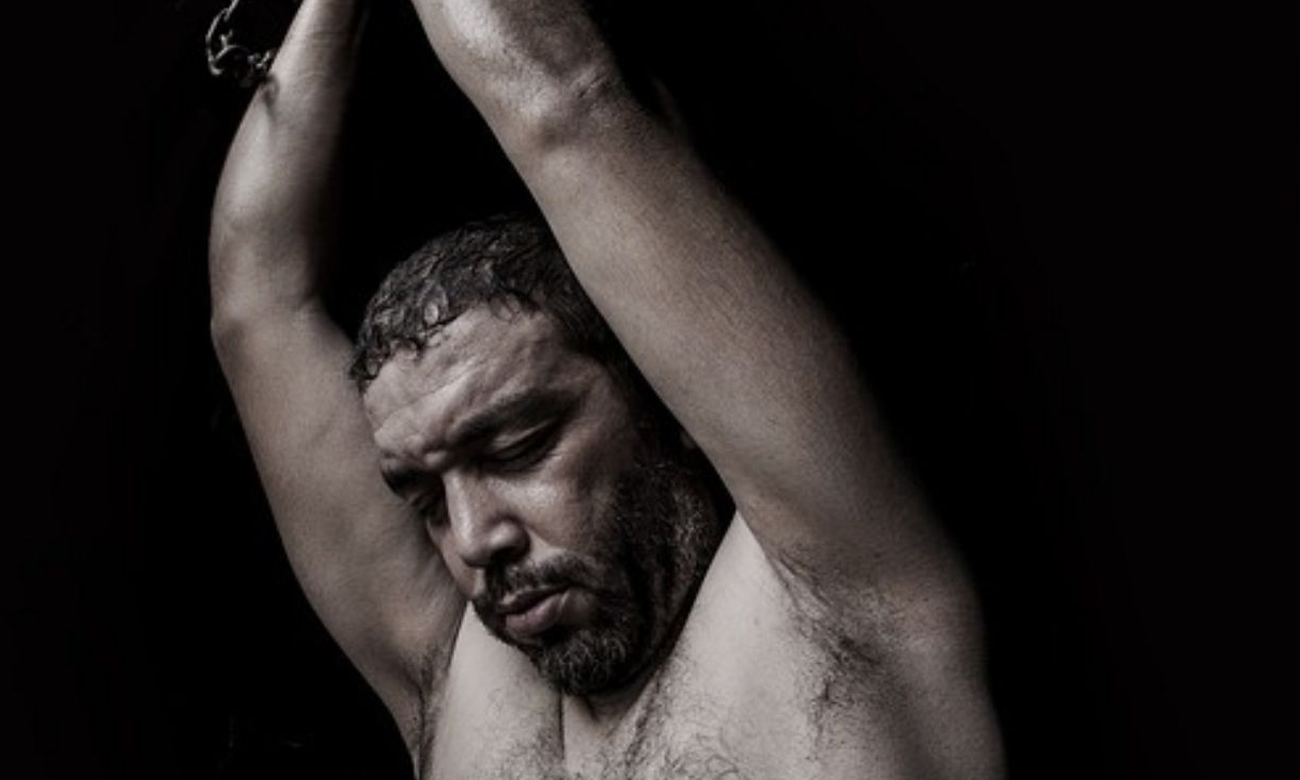
 The Syrian Network for Human Rights - (Edited by Enab Baladi)
The Syrian Network for Human Rights - (Edited by Enab Baladi)





 A
A
A
A
A
A
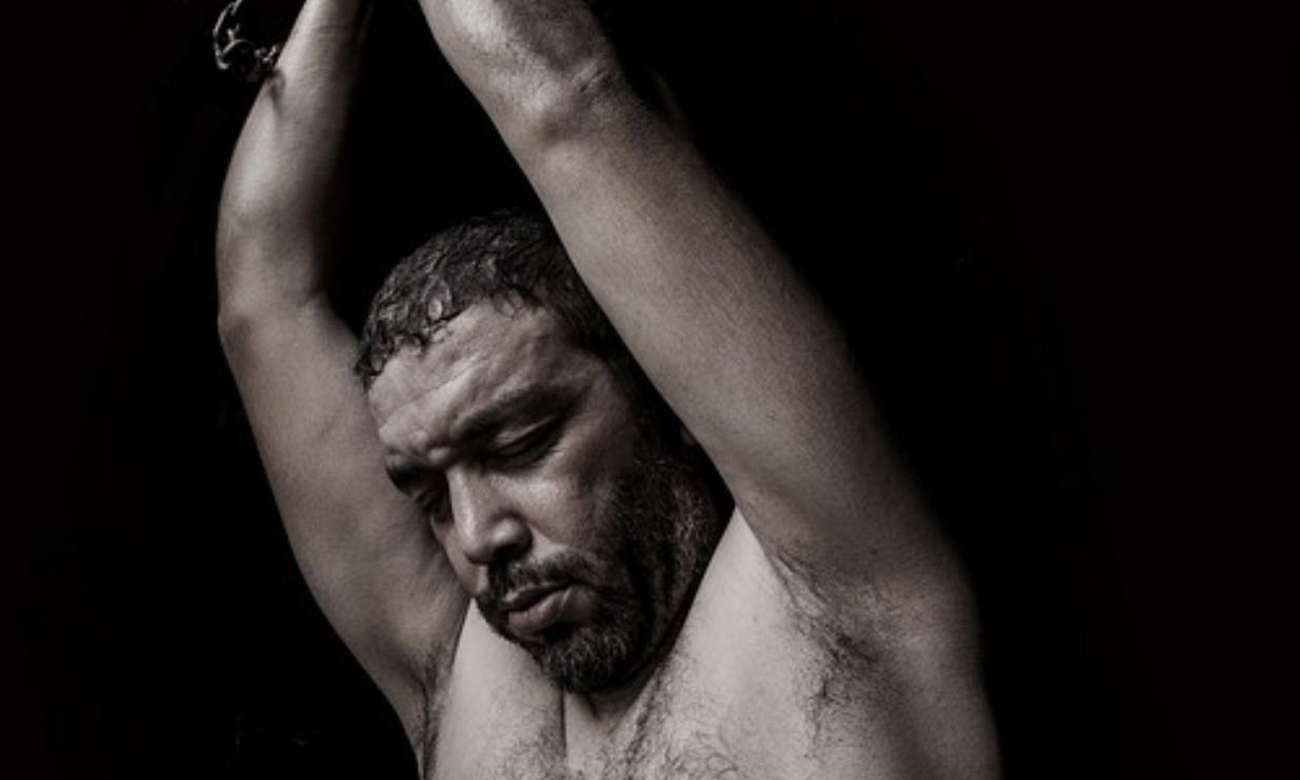

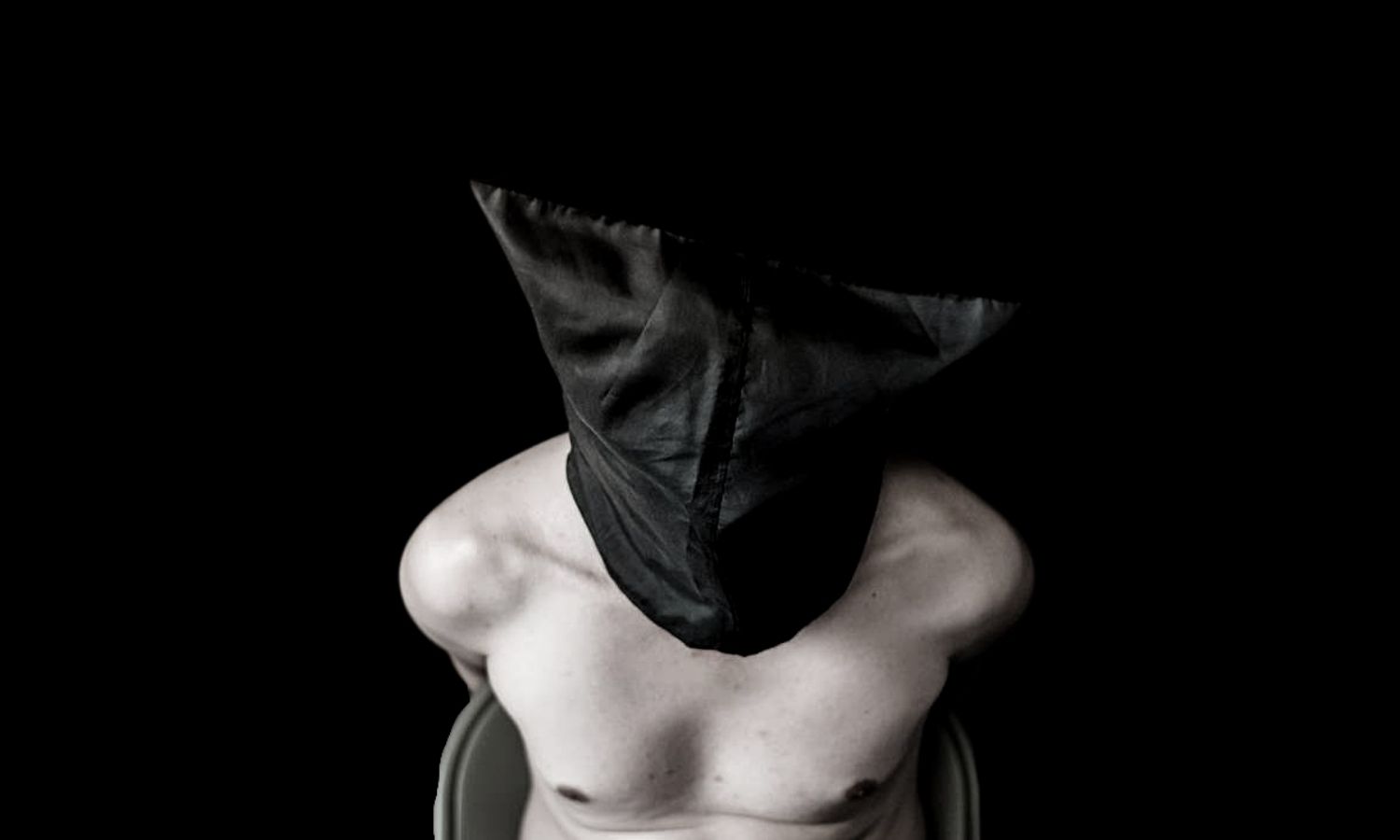


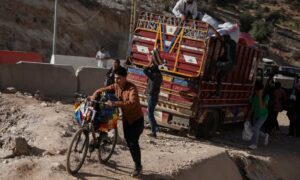

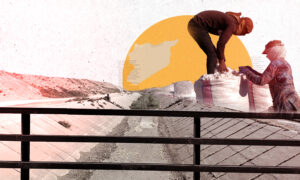
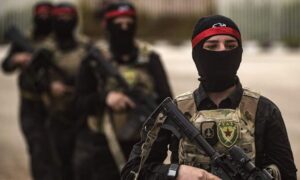
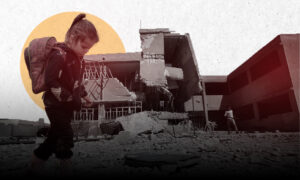
 More In-Depth
More In-Depth